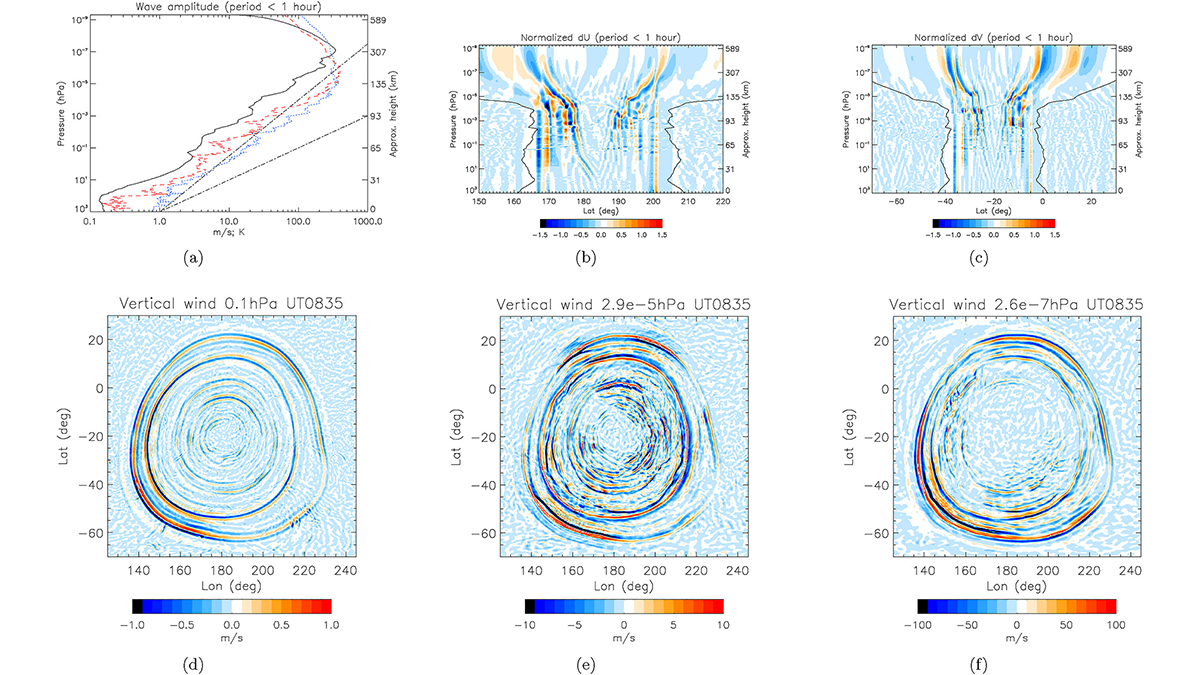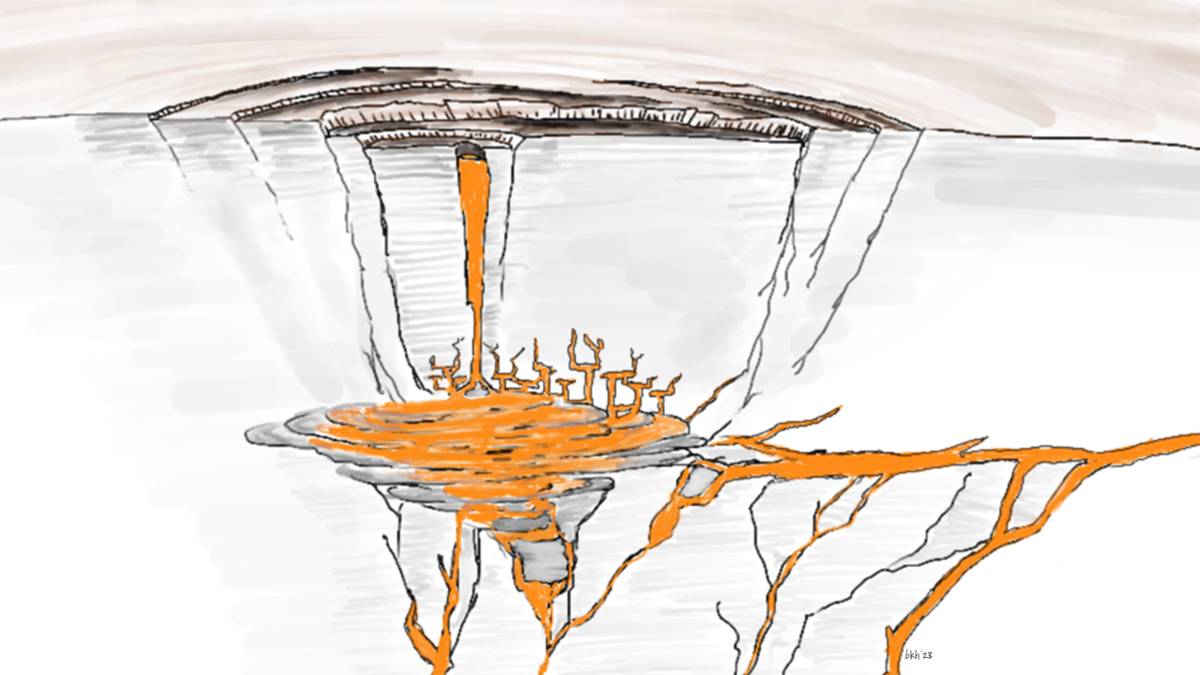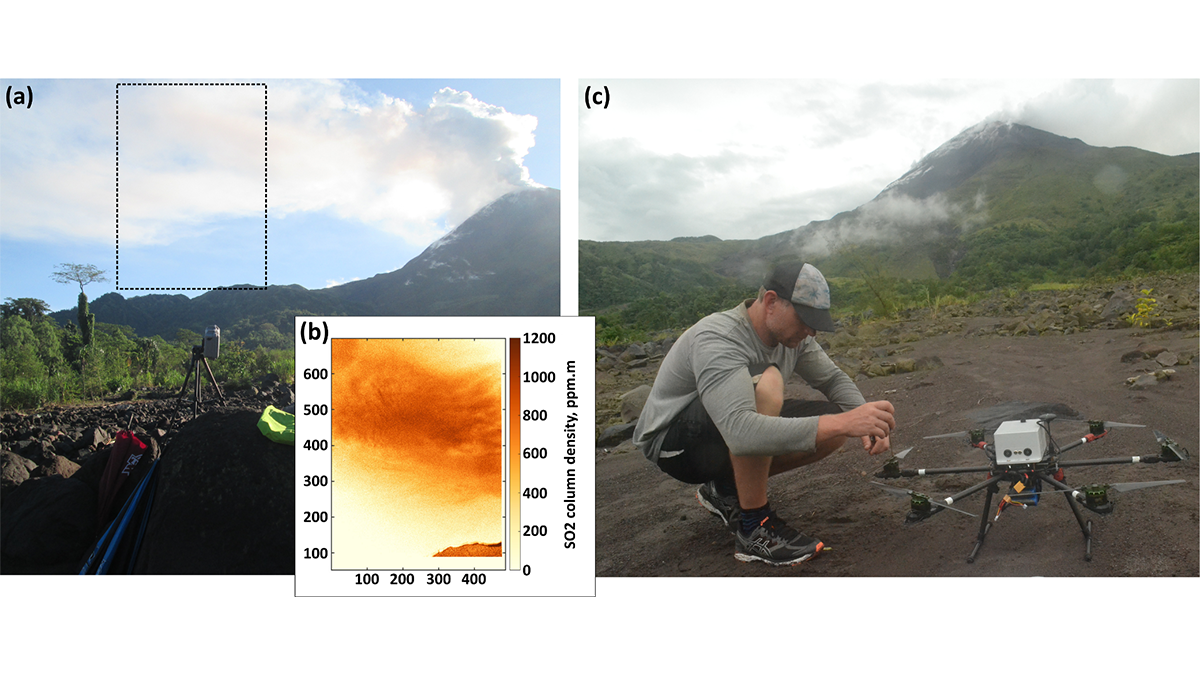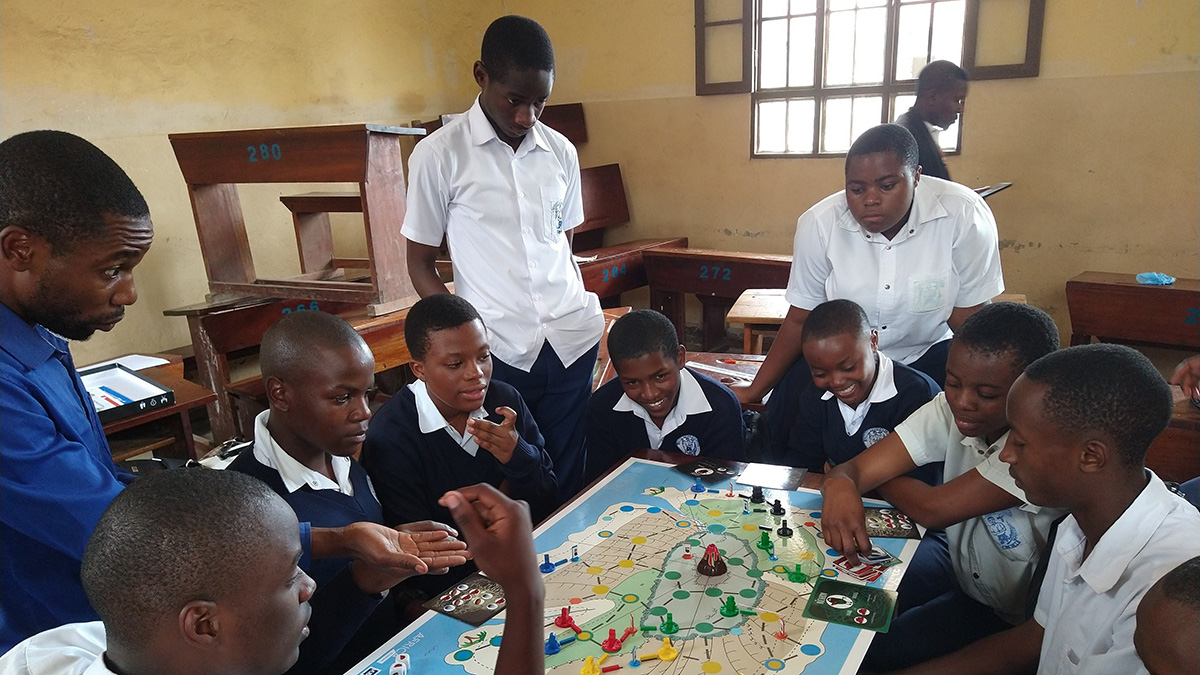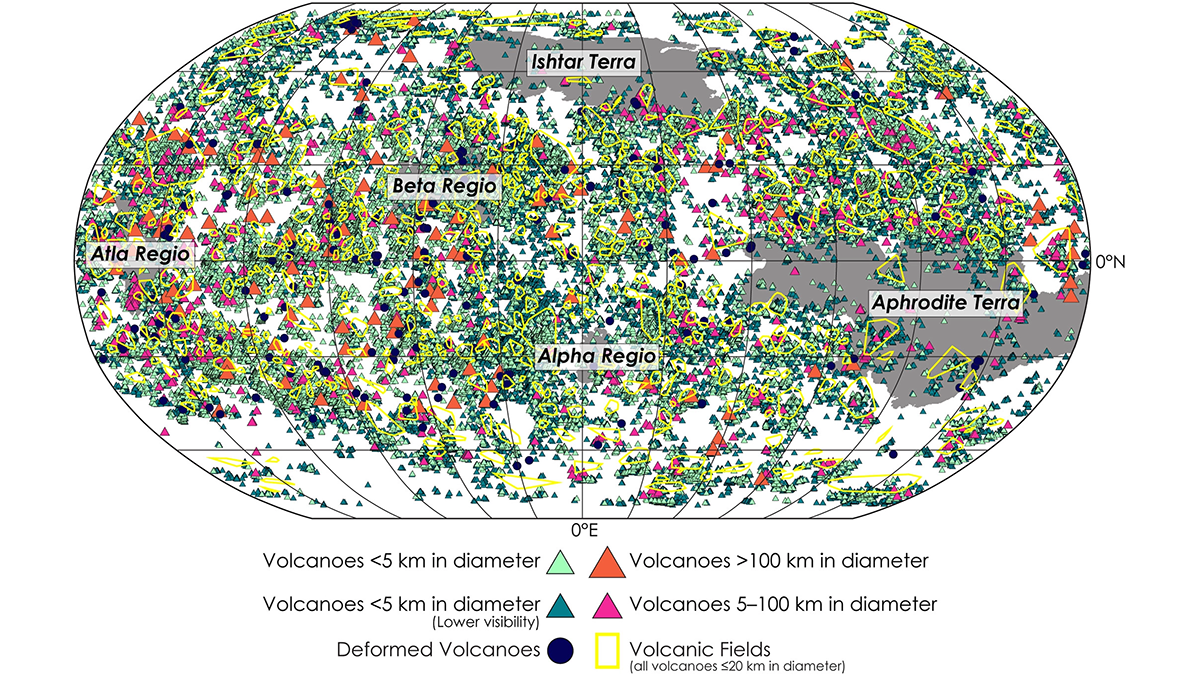A gravitational dance between a newly discovered exoplanet and its host star may be driving extreme volcanism on its surface.
volcanoes
Modeling Whole Atmosphere Responses to the Hunga-Tonga Eruption
A high-resolution whole atmosphere simulation captures the strong, global responses up to the thermosphere and ionosphere following the Hunga-Tonga volcano eruption.
Earth Is Noisy. Why Should Its Data Be Silent?
Combining visual and sonic representations of data can make science more accessible and help reveal subtle details. The recent decade-long eruption of Hawaii’s Kīlauea Volcano offers a prime example.
Send in the Drones: Safely Monitoring Volcanic Gas Emissions
New drone technology was combined with satellite and ground-based data to improve volcanic gas flux monitoring at the remote Bagana Volcano in Papua New Guinea.
Ancient Victims of Vesuvius May Have Baked in a Cloud of Ash
Debate still swirls around what killed ancient Romans during the 79 CE eruption. A study of wood charred by the event suggests a brief, but searing, flow of volcanic gas and debris.
Concientizando sobre los riesgos a las faldas de uno de los volcanes más peligrosos del mundo
A la sombra de una erupción letal en el 2021, estudiantes en Goma, República Democrática del Congo, están aprendiendo sobre futuros riesgos.
Raising Hazard Awareness at the Foot of One of the World’s Most Dangerous Volcanoes
In the shadow of a deadly eruption in 2021, students in Goma, Democratic Republic of Congo, are learning about future hazards.
Do Volcanoes Add More Carbon Than They Take Away?
Slow carbon seep long after eruptions have ceased could shape the carbon cycle on geological timescales.
A New View of Volcanism on Venus
Researchers present the most comprehensive catalog of Venusian volcanic edifices to date, providing new knowledge of the geological evolution of a relatively understudied planet.


